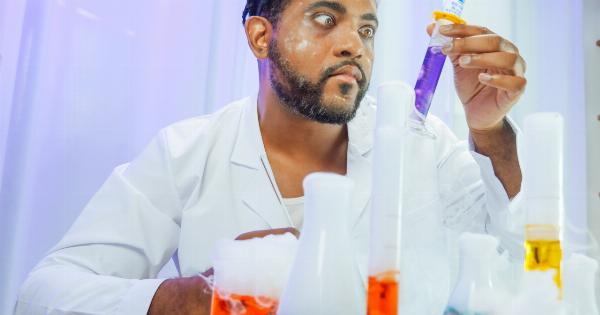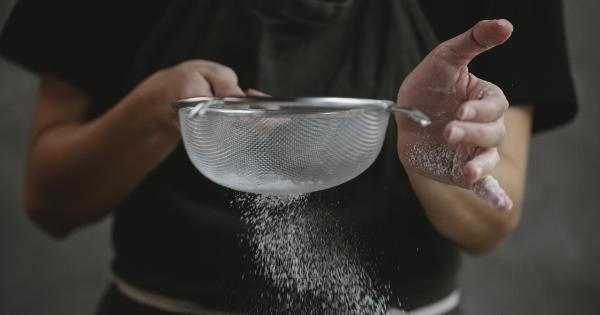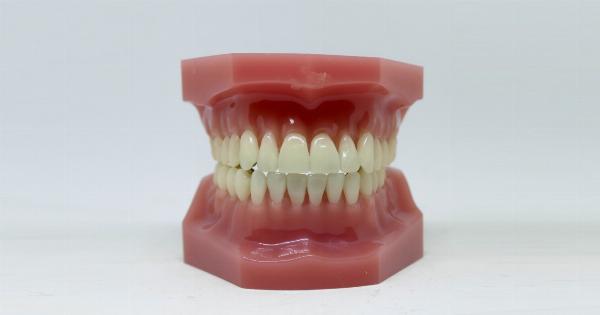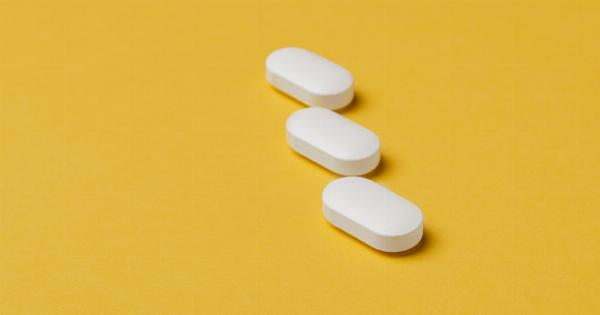Teeth whitening has become increasingly popular in recent years as people strive to achieve a brighter smile.
Whether through professional dental treatments or over-the-counter products, it seems everyone is eager to achieve a Hollywood-worthy set of pearly whites. But what is the science behind teeth whitening?.
The Anatomy of Teeth
Before diving into the science of teeth whitening, it’s important to understand the anatomy of teeth. Teeth are made up of several layers:.
Tooth Enamel
The outermost layer of the tooth is called enamel. Enamel is the hardest substance in the human body and plays a crucial role in protecting the underlying dentin and pulp. It is composed mainly of minerals, particularly hydroxyapatite crystals.
Tooth Dentin
Beneath the enamel lies dentin, a hard, yellowish tissue that makes up the majority of a tooth’s structure.
Dentin is less dense than enamel and consists of numerous microscopic tubules called dentinal tubules, which contain fluid and nerve fibers.
Tooth Pulp
The innermost layer of the tooth is known as the pulp. The pulp consists of connective tissue, blood vessels, and nerves. It is responsible for providing nutrients to the tooth and can sense temperature changes and pain.
Causes of Tooth Discoloration
Teeth can become discolored or stained due to various factors, including:.
Extrinsic Stains
Extrinsic stains are those that occur on the surface of the enamel. They are typically caused by consuming foods and beverages such as coffee, tea, red wine, and certain fruits. Smoking and poor oral hygiene can also contribute to extrinsic stains.
Intrinsic Stains
Intrinsic stains form on the inner layers of the tooth, such as the dentin and enamel. They can be caused by factors such as aging, genetics, trauma, certain medications (e.g., tetracycline), and excessive fluoride intake during tooth development.
The Science of Teeth Whitening
Teeth whitening treatments aim to reverse or reduce tooth discoloration to achieve a whiter, brighter smile. They work by either removing extrinsic stains, bleaching intrinsic stains, or both.
Bleaching Agents
Bleaching is one of the most common methods of teeth whitening. It involves using bleaching agents, such as hydrogen peroxide or carbamide peroxide, to break down and remove stains from the enamel and dentin.
Hydrogen Peroxide vs. Carbamide Peroxide
Hydrogen peroxide and carbamide peroxide are the two primary bleaching agents used in teeth whitening products.
Hydrogen Peroxide
Hydrogen peroxide is a powerful oxidizing agent that can penetrate the enamel and dentin to break down stains. It releases oxygen molecules, which help break apart the chemical bonds that make up discolorations.
Carbamide Peroxide
Carbamide peroxide also breaks down into hydrogen peroxide but at a slower rate. This slow release allows for a longer exposure to the bleaching agent, making it ideal for at-home whitening products.
Professional Teeth Whitening
Professional teeth whitening treatments are typically performed by dentists. These treatments often involve the use of higher concentrations of bleaching agents or the use of specialized light sources to accelerate the bleaching process.
In-Office Whitening
In-office teeth whitening procedures can yield dramatic results in a short amount of time.
These treatments generally involve the application of a high concentration of hydrogen peroxide or carbamide peroxide gel to the teeth, which is then activated by a curing light or laser.
At-Home Whitening
At-home whitening kits are an alternative for those who prefer to whiten their teeth in the comfort of their own homes. These kits typically contain a lower concentration of bleaching agent and are applied using custom-fitted trays or strips.
Mechanism of Action
The bleaching agents in teeth whitening products work by oxidizing the organic compounds that cause stains.
They break down the chromogens, or color-producing molecules, into smaller, less pigmented fragments, thereby lightening the tooth’s color.
Side Effects and Risks
While teeth whitening is generally considered safe, there are a few potential side effects and risks to be aware of. These include tooth sensitivity, gum irritation, and temporary white spots on the teeth.
Maintaining Teeth Whitening Results
After undergoing teeth whitening treatments, it’s essential to maintain good oral hygiene practices and avoid or minimize habits that can cause staining.
This includes brushing and flossing regularly, avoiding foods and beverages that can stain teeth, and quitting smoking.
The Bottom Line
Teeth whitening is a popular cosmetic dental procedure that can help improve the appearance of teeth affected by discoloration.
By understanding the science behind teeth whitening, individuals can make informed decisions about their oral health and choose the most appropriate whitening methods for their needs.





























